It is said that in the 19th century when many Americans left the places they had settled and emigrated to what was then the Republic of Texas, they would write the phrase “Gone to Texas,” or simply “GTT,” on the walls or fences of their former homes. Given the outsized impact that Texans have had on many genres of American music, there must have been plenty of musicians among those migrants. For this issue’s visit to the Attic we take a figurative, rather than literal, trip to the Southwest to look at a few photos of fiddlers and guitar players from the Lone Star State—with a couple from neighboring Oklahoma thrown in for good measure. In the interests of full disclosure, I must note that in several instances have no firm evidence of the musicians’ provenance, and am relying on hunches and external evidence in placing them in the southwest.
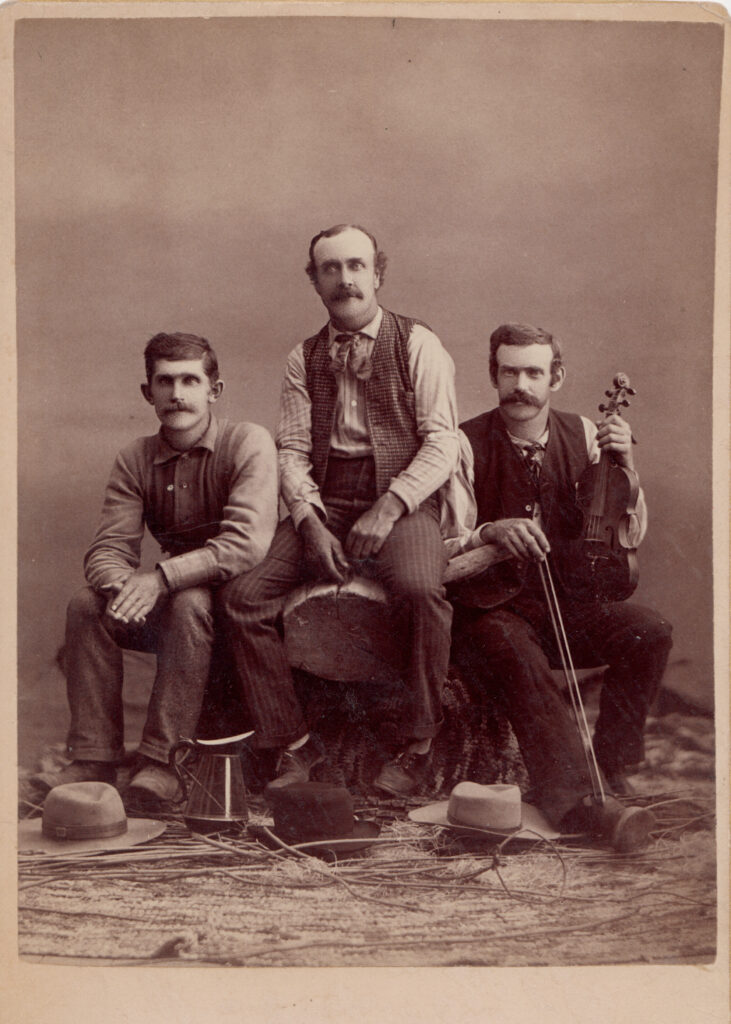
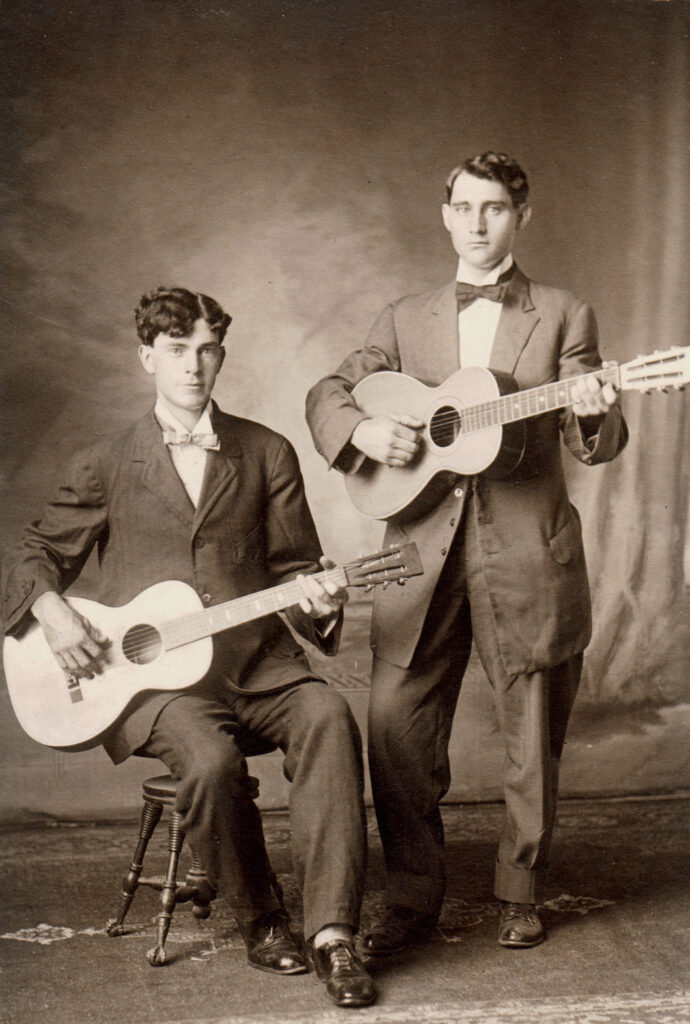
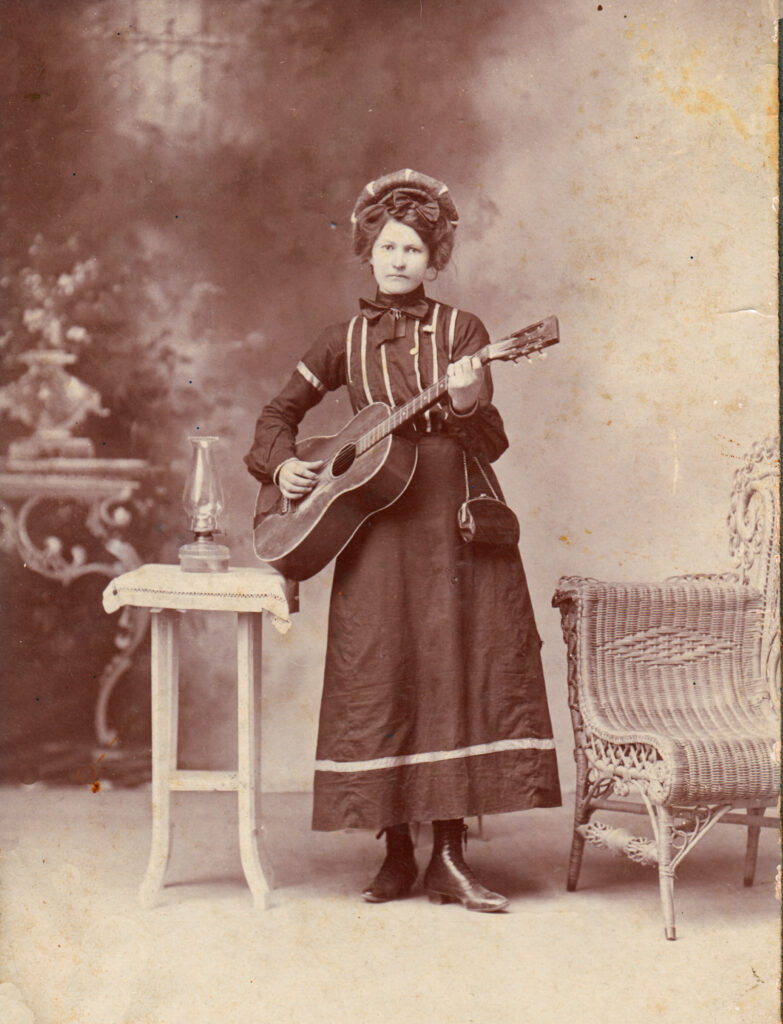
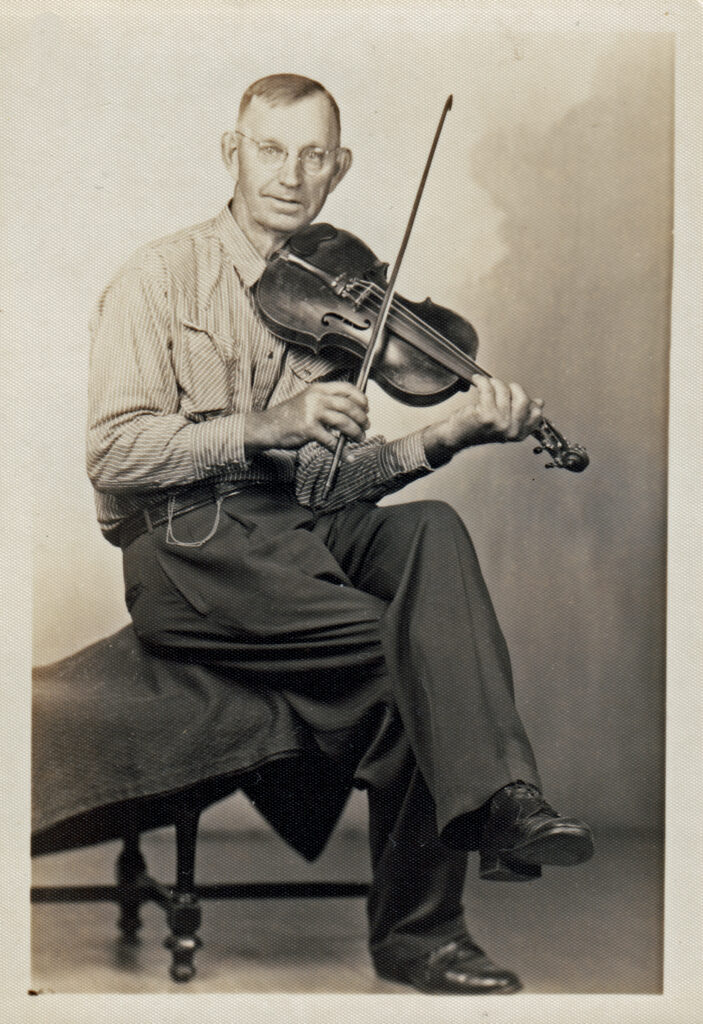
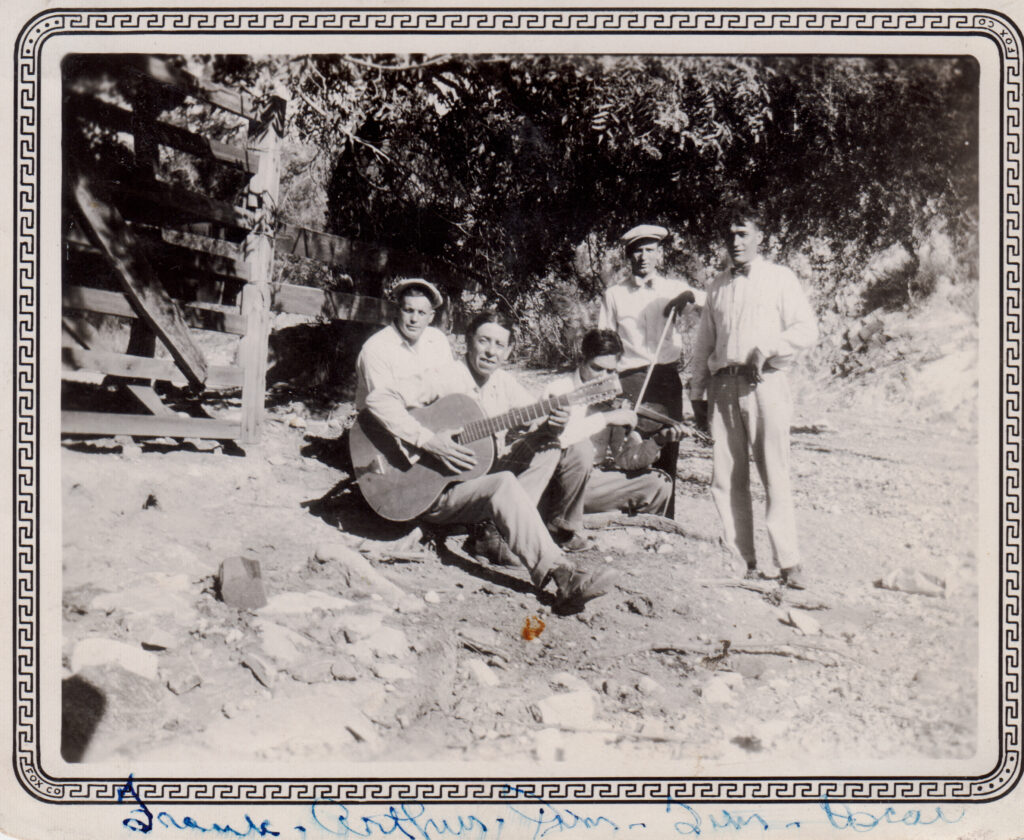
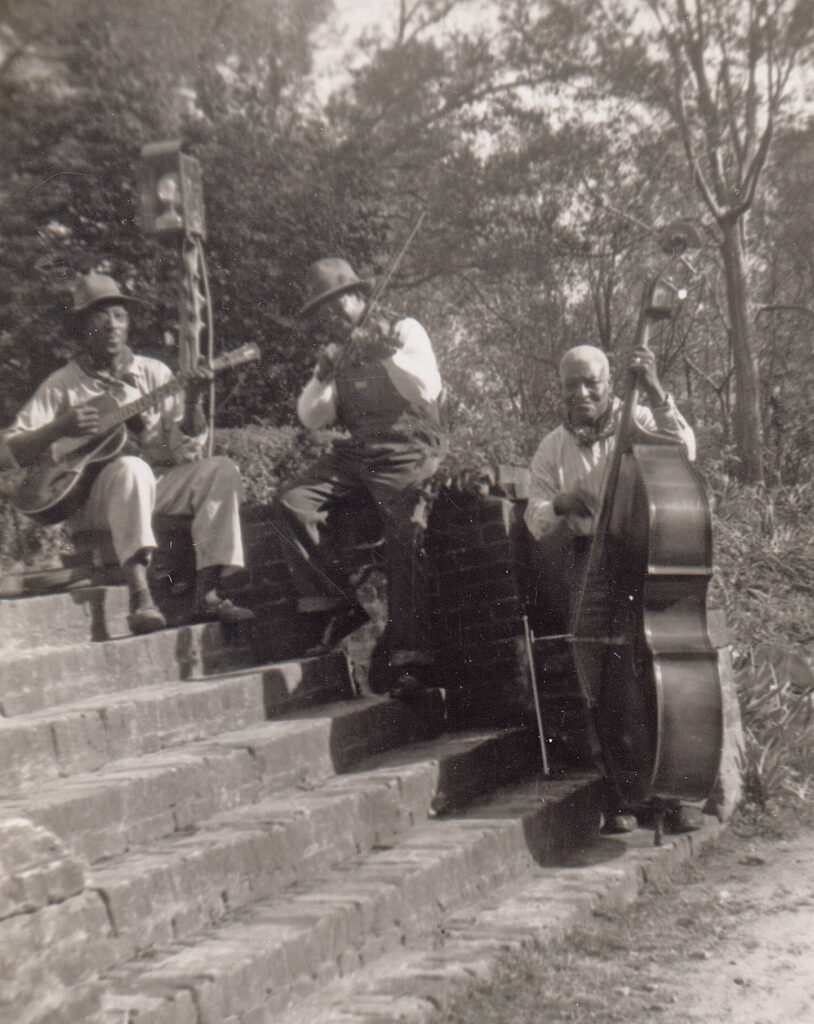
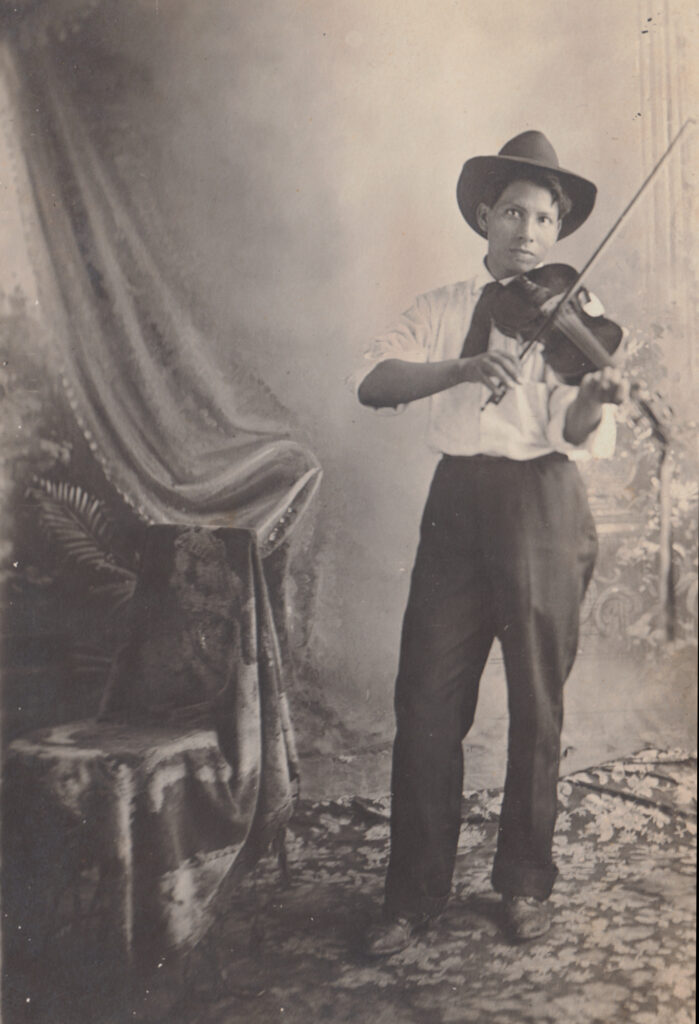
Such is the case with our first image: a trio of well-dressed young men with fiddle, guitar, and mandolin. There is no information on the mounting card regarding location or name of the originating studio. However, I obtained it from a dealer who, in turn, had acquired it from an estate in the Idabel, Oklahoma area. A hand-written note on the reverse of the mounting card identifies the subjects as “Lee Evett & friends.” This note is preceded by an “X”; an “X” on the left pant cuff of the mandolin player pinpoints our man Lee. One Lee E. Evett, who is probably the same fella, turns up in the 1910 and 1920 U.S. census records. In 1910, he was 26 years old, and living in Parsons City, Labette County, Kansas. By 1920 he’d moved south to Oklahoma City. The photo was probably taken some time in the period framed by those two years. In both instances his occupation is given as railroad brakeman. The spiffy matching caps that the musicians wear suggests that we’re looking at an organized ensemble.
The Oklahoma provenance of our second photo, of two well-dressed and impeccably groomed young guitarists, is not in doubt. It the work of photographer Ernest Rotzien, who operated out of Holdenville, Oklahoma. Rotzien was born in Germany, lived in Indiana for several years, and relocated to Holdenville sometime in the late 19th or early 20th century. Holdenville is about 80 miles east, and slightly south, of Oklahoma City; it is the seat of Hughes County. It was carved out of Indian Territory and incorporated as a town in 1898. Never a very populous burg, in the first decade of the 20th century its population went from c. 750-c. 2,300 and came in at just under 6,000 in the 2020 census. I have no information about the identities of the two musicians or what sort of music they might have played on their generic, slotted-head guitars. Given that in its early years Holdenville had the dubious distinction of having been a “sundown town” where Black folks were not allowed to live, we can guess at what sorts of music would not have been popular there.
The serious-looking lady in our third image holds a guitar similar to those wielded by the two studly gents in the previous photo; like them, she appears to be fingering a “C” chord. She also is at least their sartorial equal. Her blouse and skirt appear to be new, with simple but attractive decorative trim. Her hair has been very carefully styled and enhanced with a lovely bow that complements the one at her neck. We might wish for a better view of the jaunty hat she’s sporting. A small handbag hangs on her left side, not slung over her arm as we might expect, but perhaps clipped to the waistband of her skirt. Whoever she was, she has done her very best, to look her very best, for her visit to the photographer’s studio.
Just what studio it was is hard to say, as the identifying information on the mounting card is quite worn and nearly impossible to make out. The name “Lennox” is relatively easy to discern, and, with a good deal of effort, I can tell that it was located somewhere in “Tex.” But the street name, number, and city defy my best efforts to decipher them. I have been unable to find any information on any Lennox studio. We will need to content ourselves with the knowledge that the photo comes from somewhere in Texas.
In contrast to the lady’s very neat appearance and unblemished clothing, her guitar has apparently been “rode hard and put away wet.” To coin a phrase. In spite of the fact that she apparently played without using any picks, the top is quite thoroughly scratched and covered with small dings. The action looks very high and the area around the nut is covered with dust. I hesitate to speculate about what sort of music she would have played. Accompanying fiddlers does not strike me as being likely, but that’s just a hunch.
I am also playing hunches in thinking that the next two images might be of musicians from Texas, or at least somewhere in the Southwest. The clothing, hairstyles, and overall affect of the three resolute gents in our fourth photo fairly scream “Old West” to me. The hats on the ground, together with what looks like a lariat, contribute to the impression. Adding credence to my hunch is the fact that the man on the viewer’s left is wearing large leather, gauntlet-like cuffs on both wrists, over the sleeves of his shirt. These “riding cuffs” or “roping cuffs” are worn to protect horsemen from rope burns, heavy brush, and such. This fella, at least, could well have been a working cowboy, though he is otherwise dressed more for the studio than for a day working on the ranch.
Placing the photo of the handsome young fiddler wearing a black hat in this group of musicians from Texas and Oklahoma is a bit more speculative. Again, his attire looks as if it would be appropriate for the Southwest. Beyond that, the man’s features look Indian or perhaps Hispanic. Of course, even if I’m right in this, that’s no guarantee that he’s a “TexaHoman.” It’s a hunch. I’d dearly love to know more about him, especially to know what kind of music he played. This is a real photo postcard, with no information about who the photographer might have been.
I’m on much firmer ground with our sixth image, that of a bespectacled fiddler seated on a bench. This is one of a group of photos said to have come from a studio in Denton, Texas, a city on the northern edge of the Dallas-Fort Worth metropolitan area. It is the home of the University of North Texas. This man looks like a Texas fiddler, with his rimless glasses, striped, Western-style shirt, and pleated pants, replete with long watch chain. He has the appearance of someone who would be right at home playing for a square dance on a Texas ranch. Regrettably, identifying information is again lacking. In doing this series of articles I always hold out hope that some reader will recognize one of the subjects in the photos and come forward with an ID.
With our remaining images we move from the realm of professional studio photography to look at a couple of snapshots presumably taken by amateurs. The first shows a group of people gathered around a man playing a big-bodied 12-string guitar, while a fiddler sits behind him. The photo print has the distinctive border design that was the product of the Fox Company of San Antonio. Fox began as a small photofinishing company in San Antonio and eventually expanded to doing mail order to a nationwide clientele, so there is no guarantee that this photo was taken in Texas. But the decidedly Hispanic features of the guitarist, the arid terrain, and—perhaps most importantly—the presence of the 12-string guitar are all strong indications that the setting is somewhere in the Southwest. Although the history of the 12-string is not well documented, prevailing hypotheses point to Mexico as a likely point of origin. There are several names written along the bottom edge of the print. but most are difficult to decipher: “Frank,” “Arthur,” “John,” “Jim,” and “Oscar” are my best guesses.
Rounding out this trip to the Attic is a snapshot of an African American string trio believed to have been taken somewhere in East Texas. It is one of a pair of photos obtained from a seller who picked them up in the vicinity of Houston in a lot with numerous photos from identifiable places in the region. Despite the poor exposure which makes it difficult to discern the musicians’ facial features, I feel that the photo is worthy of publication; photos of Black string bands from this period (which I estimate to be sometime in the late 1950s or early 1960s) are few and far between. As always, I would love to know something about the men and the music they played. They’re dressed like country folks. The guitar looks like a moderately-priced archtop instrument such as a Kay or Harmony, possibly a 4-string tenor. That’s quite a nice-looking bass. A bow can be seen hanging from the bridge. In the companion photo (not included here due to its even poorer quality) the bass player is using the bow, something a bit unusual for a rural musician. Perhaps he had formal training?
The folks who packed up their households and left behind “Gone to Texas” messages for their old neighbors were a mixed lot. They came from all over and brought a wide range of musical traditions with them. As a result, the region has a wonderfully rich and diverse musical culture. Although most of the people in the photos printed here are anonymous, and we know virtually nothing about their lives or music, they all contributed in some way to this richness and diversity.
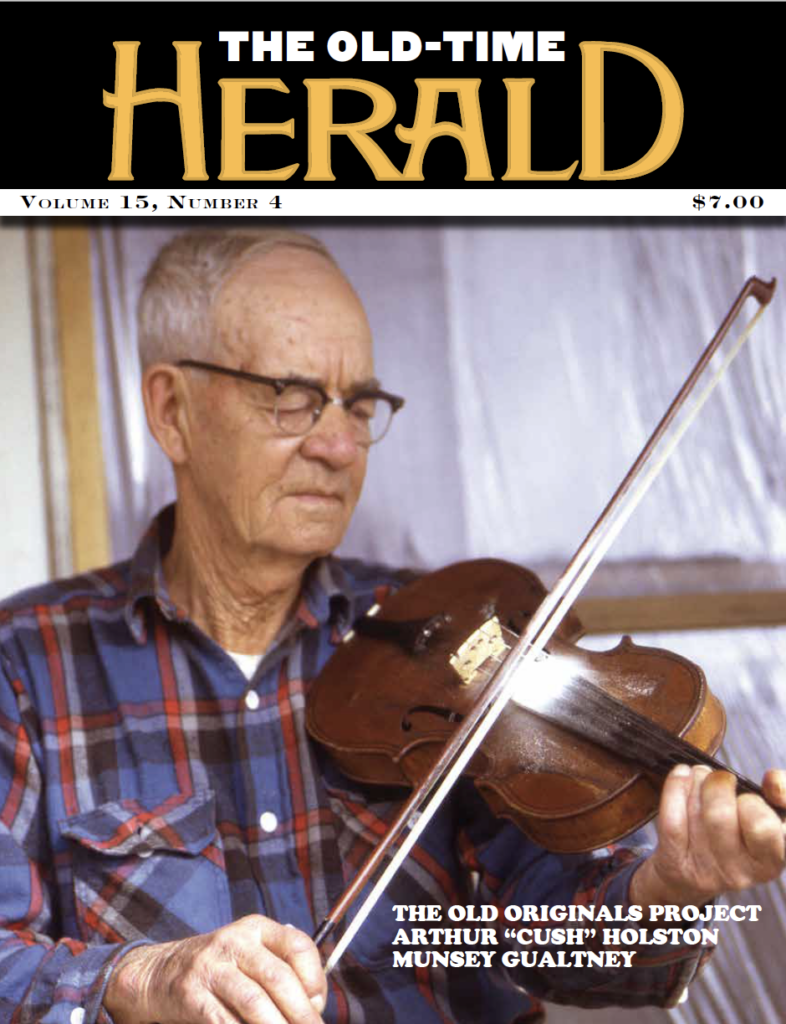
Leave a Reply